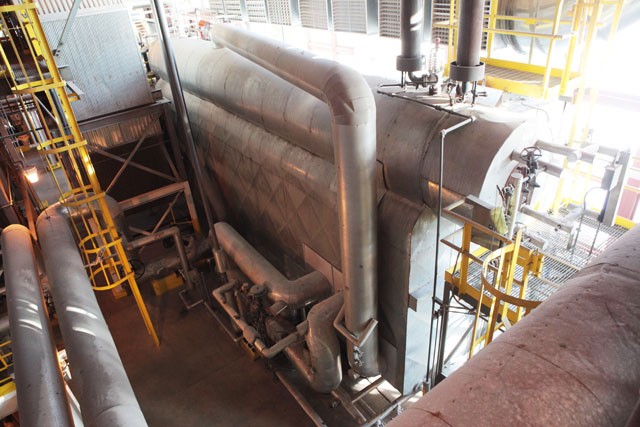How many pounds of steam does it take to heat the University of Minnesota?
Short answer: a lot. Long answer: thousands per hour backed by coal, oat hulls and the workforce to put it all together.
The University uses four main types of fuel to create the steam that heats all three campuses. It uses a combination of 70 percent natural gas and biofuels and no more than 30 percent coal and fuel oil.
The University spends about $97 million annually on its Energy Management department. Of that total, more than $40 million goes directly toward heating, which includes $14.5 million on fuel. Fuel costs are down from $20 million per year from a few years ago because the price of natural gas has decreased.
In an attempt to save money, there was a 10-day campus shutdown during winter break that University administrators hoped would save $160,000 in energy costs.
The University saved $120,000 minimum. Most of the savings were from electricity and salaries because buildings still needed to be heated to keep pipes from freezing and lab animals warm.
No longer using wood, the University gets oat hulls, the leftover âÄúnot good for eatingâÄù byproduct of cereal like Cheerios and oatmeal, from Iowa and Canada. The oat hulls are then mixed with the UniversityâÄôs coal supply to help keep dust down and make it useable.
Since July 2010, the University has used a little more than 26 percent of its coal allotment, a percentage that amounts to 40,000 tons of coal each year.
âÄúWeâÄôre small potatoes,âÄù Jerome Malmquist, director of Energy Management said about the UniversityâÄôs coal consumption compared to other universities.
The University gets 30 percent of its energy from coal, far less than other schools, like Michigan State University, where more than 86 percent of energy came from coal from 2009 to 2010.
Coal is necessary in the UniversityâÄôs heating because of the agreement they have with Center Point Energy and Xcel to lower their costs. The University has an interruptible gas rate, which means that when natural gas levels get low they are forced to use other means. Energy Management will receive a call and be given a timeframe to switch over to an alternate source of fuel.
The coal, natural gas, fuel oil and oat hulls together heat gallons upon gallons of water to make steam in four huge boilers. The steam then travels through five and a half miles of underground tunnel lined with Pepto-Bismol-colored pink piping. The pipes werenâÄôt always pink, but in the process of clearing out all the asbestos insulation it was decided the pipe should be marked with a pink covering, Michael Nagel, assistant director of Energy Management said. More pipes are being added and are expected to be completed by September 2011.
The pink pipes start underneath the Southeast Steam Plant, which is across the Mississippi River from the Guthrie Theater. There, hard hats, goggles and ear plugs are necessary for all those who enter. About 30 people work there, some of them former University employees who now work for a contractor hired by the University.


